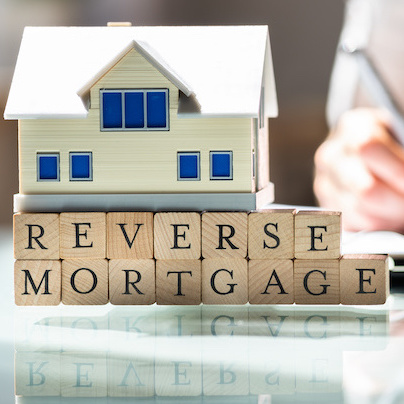
Reverse Mortgage Refinance guide for homes in the Inland Empire
If you own your home in the Inland Empire and are at least 55 years of age (at least 62 years old for FHA HECMs), a reverse mortgage may allow you to pay off your existing mortgage and convert part of your home’s equity into cash with no monthly mortgage payment. A reverse mortgage allows you to take out a loan against the equity in your home and receive cash in a few different ways. You can use the money from the loan to pay for living expenses, medical bills, travel, emergency savings or anything else you need. The loan will be repaid when the last borrower no longer lives in the home.
If you are considering a reverse mortgage in the Inland Empire, you must understand what a reverse mortgage is and how it works. There are two general types of reverse mortgage loans. There are Jumbo reverse programs and there are FHA HECM (Home Equity Conversion Mortgages).
Just like a regular mortgage (known as a forward mortgage) a reverse mortgage is a loan secured by your home. However, with a regular forward mortgage you make required monthly payments, and the loan balance goes down each month. In contrast, with a reverse mortgage no monthly mortgage payment is required. The interest due for that month is added to the balance. So, the balance increases over time. A reverse mortgage is a way to tap into the equity in your home and eliminate mortgage payments without having to sell.
How much money can I borrow with a reverse mortgage, and what are my options for receiving payments?
The amount you can borrow is determined by your age, the interest rate on your loan, and the value of your home. You can receive your money in three ways: as a line of credit, as a monthly payout, or as a lump sum payout.
You have three main options for receiving your money:
1) Line of credit (adjustable interest rate)
A reverse mortgage line of credit is less expensive than a lump sum payment because you only pay interest and fees on the money you use. Available on both Jumbo & HECM programs.
2) Monthly payout (adjustable interest rate)
To supplement your income, get a fixed monthly payment. A monthly payout reverse mortgage monthly payout can be combined with a credit line. Available on the HECM only.
3) Lump sum (fixed interest rate)
Take out all available funds at once with a reverse mortgage lump sum. The amount available may be less than that of other payment options. Available on both Jumbo & HECM programs.
Finally, please note that homeowners who already have a HECM or Jumbo reverse can also refinance into a new reverse mortgage as long as there is a clear advantage to doing so.
If you still have questions, call/text/email or go to A+ Home Loans for your Reverse Mortgage options. We are happy to help you with your financial needs.
Disclaimer. This material is not from HUD or FHA and has not been approved by HUD or any government agency.
The reverse mortgage borrower must meet all loan obligations, including living in the property as the principal residence and paying property charges, including property taxes, fees, hazard insurance. The borrower must maintain the home. If the borrower does not meet these loan obligations, then the loan will need to be repaid.
When the loan is due and payable, some or all of the equity in the property that is the subject of the reverse mortgage no longer belongs to borrowers, who may need to sell the home or otherwise repay the loan with interest from other proceeds. The lender may charge an origination fee, mortgage insurance premium, closing costs and servicing fees (added to the balance of the loan). The balance of the loan grows over time and the lender charges interest on the balance. Borrowers are responsible for paying property taxes, homeowner’s insurance, maintenance, and related taxes (which may be substantial). We do not establish an escrow account for disbursements of these payments. A set-aside account can be set up to pay taxes and insurance and may be required in some cases. Borrowers must occupy home as their primary residence and pay for ongoing maintenance; otherwise the loan becomes due and payable. The loan also becomes due and payable (and the property may be subject to a tax lien, other encumbrance, or foreclosure) when the last borrower, or eligible non-borrowing surviving spouse, dies, sells the home, permanently moves out, defaults on taxes, insurance payments, or maintenance, or does not otherwise comply with the loan terms. Interest is not tax-deductible until the loan is partially or fully repaid.



